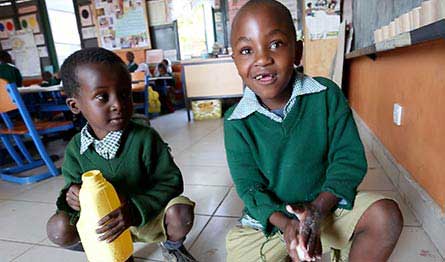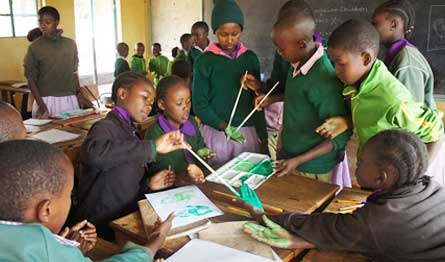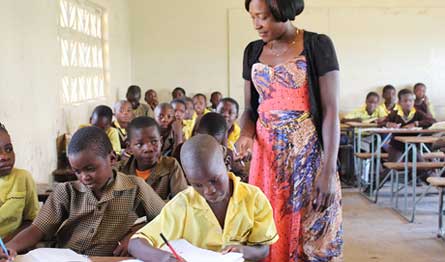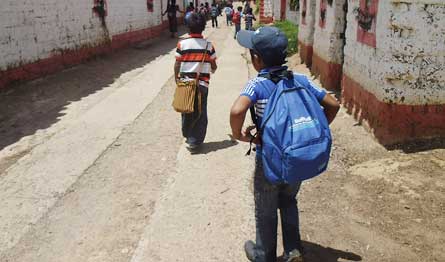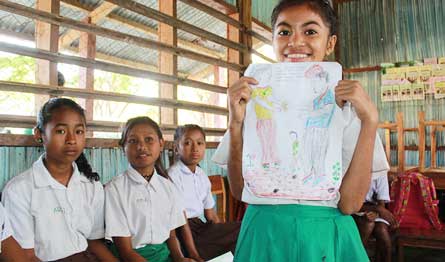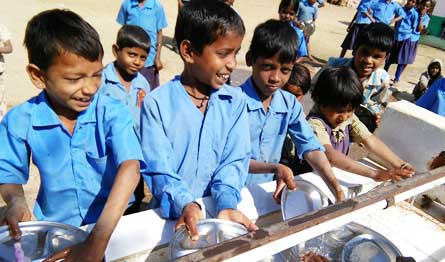Site will be
unavailable for maintenance from June. 4, 11:30 p.m., to June 5, 12:30 a.m. ET. Thank you for your
patience!
Poverty and Education
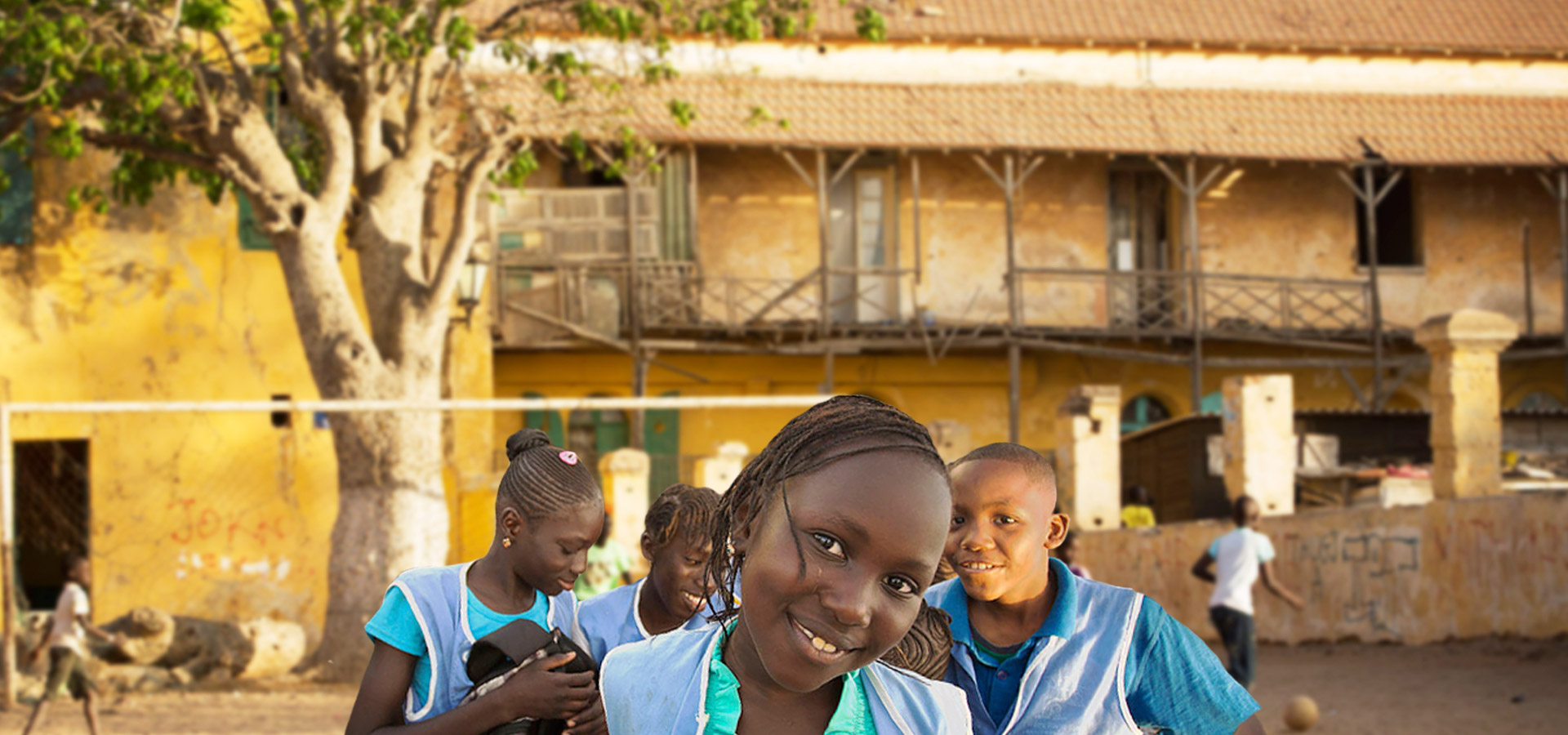
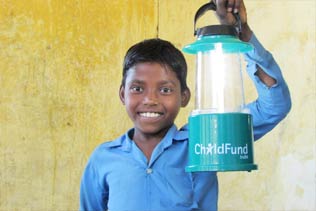
A young boy in India holds up a lantern he received as part of ChildFund's Books, My Friends campaign.
The effects of poverty on children are wide-reaching and can lead to lifelong struggles, especially when young people don’t receive full educations.
Poverty and education are inextricably linked, because people living in poverty may stop going to school so they can work, which leaves them without literacy and numeracy skills they need to further their careers. Their children, in turn, are in a similar situation years later, with little income and few options but to leave school and work.
ChildFund aims to help families escape the cycle of poverty through various educational and livelihood programs. Many times, we learn by listening to communities about their specific needs and working to fulfill them.
For example, ChildFund India started a literacy campaign in regions where few households had any books, and because most homes didn’t have electrical power, ChildFund India distributed nearly 40,000 solar-powered lamps so children could read at night time.
The Effects of Poverty on Education
In many countries where ChildFund works, school is free, but there are additional costs for uniforms, books and transportation, especially in rural areas, where a student may travel more than an hour each way by public bus to school. The expenses may be too much for a family to pay, on top of the money the family loses by not sending a child to work or even marrying off a daughter.
Some countries’ governments also spend a lower share of their gross domestic product (GDP) on education, which makes public education less available (particularly to the poor) and of lower quality. Overcrowded classrooms, broken desks, no computers — all are common sights in school districts with budgets that don’t meet students’ needs. Teachers burn out or may be unqualified to teach certain subjects. All of these challenges create a serious disadvantage for children growing up in poor households.
The Importance of Education in Developing Countries
The importance of education in developing countries cannot be overstated. Education can be the catalyst needed to pull families and communities out of the cycle of poverty. Knowledge gives children the power to dream of a better future and the confidence needed to pursue a full education, which in turn will help generations to come.
Education also makes a significant difference for adults, particularly when it applies to day-to-day life, including nutrition, healthcare and gender equity. When adults learn, they become role models to their children, who also wish to learn.
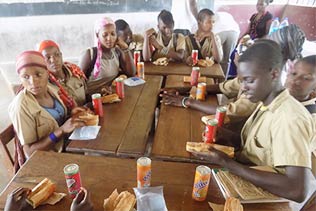
In Guinea, students participated in discussion sessions about violence in school, child marriage and female genital mutilation.
Education Improves Food Security and Reduces Malnutrition
When people learn about agriculture and farming techniques, they gain the ability to grow and maintain healthy crops, which provide vegetables for meals and additional income. Families also learn what nutrients their children need for healthy development, as well as foods pregnant women need to eat to promote their babies’ growth.
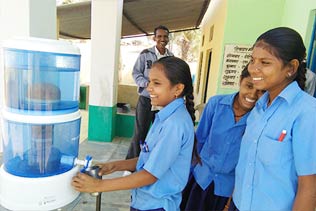
Girija fills her cup with filtered water at her school in Udaipur
Education Improves Standards of Health
Literacy is key to good health because women need to be able to read about prenatal vitamins and other health information during their pregnancies. This, in turn, reduces the rates of prenatal and maternal mortality, and improves children’s health, too. The ability to read also is important in educating communities about clean water and sanitation, particularly if families need to use filters or boil water before drinking it to avoid waterborne illnesses. Other examples abound, including emergency notices about the Zika virus, Ebola or HIV. Reading keeps people healthier in many ways.
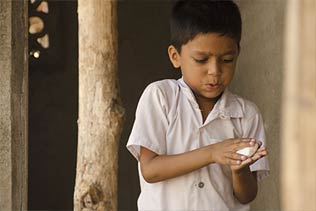
Both Kunal and his little sister wash their hands whenever they come inside the house after playing as well as before meals
Education Reduces the Spread of Communicable Diseases
The spread of disease in developing countries is often exacerbated by a lack of public knowledge about how it is transmitted. In 2014 and 2015, youth groups in West Africa helped spread the word about prevention of the Ebola virus, particularly the need to avoid traditional burial practices that spread the deadly disease. Especially when local, trusted voices convey this lifesaving information, communities are receptive to learning. Even in non-emergency situations, education about the spread of disease is important.
In 2011, ChildFund launched a USAID-funded program to help Kenyan families build a future beyond HIV through education, which has led to healthier children and families.

Erika (14) attends school in Talisay, Philippines, where ChildFund is working to keep kids out of laboring in sugar cane fields.
Education Improves Gender Equity
Educating women and girls about reproductive healthcare and their rights regarding marriage empowers them to make decisions about their lives. Early marriage and pregnancy cut educations short and often lead to underweight, undernourished children, as well as domestic violence. When girls stay in school longer, they are less likely to marry before age 18 and have children early, and they’re more likely to find rewarding work after leaving school. Approximately 39,000 under-aged girls marry each year, some as young as 8 or 9. Community-wide education helps everyone understand the harm of this practice.
Breaking the Cycle of Poverty Through Education
Education in all different forms is key to breaking the cycle of poverty. It has an uplifting effect on other aspects of society that may seem totally unrelated, such as girls’ education lowering the number of prenatal deaths. The relationship between poverty and education is complex, but we know that education helps people make healthier and smarter decisions about their children, their livelihoods and the way they live.
Education also has a significant role in the fight for children’s rights, both in teaching children what they can and should expect from adults, and in showing adults the benefits of respecting their children’s rights. In Timor-Leste, children have stepped forward to advocate for their rights in school through the Children Against Violence project. Touring around the country, they raise awareness of corporal punishment through theatrical drama. In this and many other cases, education is a powerful tool that can make the world a better place.

